MTO-1000AM 10.5/1100mm
The MTO-1000 is a Maksutov-Cassegrain lens that uses a combination of mirrors and lenses to produce a relatively compact package capable of a very long focal distance. The same design is commonly used in telescopes and that’s essentially what this lens is. Mirror (reflecting) telescopes date back to the 17th century so aren’t exactly new technology but centuries of refinements have yielded instruments capable of amazing clarity. This particular Soviet design was part of a group of lenses that won the Grand Prix award at the 1958 Exhibition in Brussels. Although early M39 mount versions are available, I’ve opted for a later edition MTO-1000AM from 1979 which offers improved optics and ergonomics. I paid just over £200 with shipping for an excellent sample from Estonia. You can find them cheaper but I don’t mind spending more for condition. This one even came with a huge leather box and 3 massive lens filters.
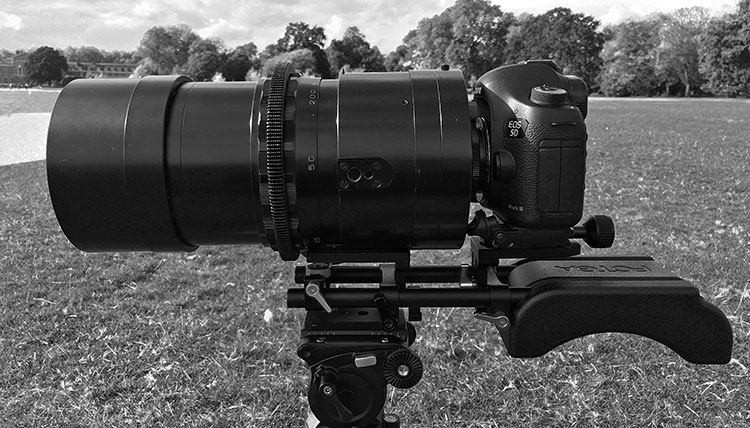
This is longer than my typical lens review because I’ve had a week off work and spent some much needed time clearing my head, rambling through London parks (during the best time of year) and lugging around what must be the biggest Soviet lens ever made. I’ve spent days getting to know the MTO-1000, both its limits and its strengths and have enjoyed using it. The MTO-1000 is by a considerable margin the largest, heaviest, longest, slowest most intimidating and difficult lens I have ever used. I had minimal expectations based on online ’reviews’ and assumed the best test would be a shoot out between the MTO-1000 and the excellent Canon 100-400mm. Armed with both, I headed out the first day and snapped a series of comparative test shots. Let’s get those out of the way.
Let me explain a bit about the test and why it surprised me. Despite having less range, I anticipated the Canon 100-400mm to triumph due to its excellent sharpness and resolution. Being a range test, I brought along both the Canon 5D3 and trusty 7D as well as a Kenko 1.4x teleconverter for even more magnifying power. A teleconverter or crop sensor camera like the 7D will have a magnifying effect but only because you’re seeing a cropped section of the lens’ full potential. With all this kit to back up the theory, I was ready to publish my findings before even taking the first shot. To my astonishment, the MTO-1000 exceeded every expectation especially when I started to experiment with video. Not only did it hold its own against the 100-400, on range it takes things to another level. But getting those results is no easy task.

Left: Canon 5D3 with the MTO-1000 (1100mm)- Right: Canon 7D with the 100-400mm @ 400mm
and Kenko 1.4x extender (equivalent 900mm)
The Canon 100-400mm is unquestionably the sharper lens but not by the margin I was anticipating. A 100% crop shows more detail on the 100-400mm but not to the point that it outperforms the MTO-1000 on its own. That was surprising. Whether using a crop sensor camera body like the 7D or a teleconverter like the Kenko 1.4x, quality suffers noticeably more on the MTO-1000 than the Canon 100-400mm. What the test also shows is that 1100mm is so much more reach than 400mm, cropping the MTO-1000 isn’t really that important. Remember, the MTO-1000 was made before we even had something called a crop sensor so there shouldn’t be much surprise that its quality suffers when only looking at a fraction of its frame. Stick the MTO-1000 on a full frame 5D, then the results look impressive – amazing actually. Even cropped, the MTO-1000 delivers superb results with HD video. Here is a captioned version of the above video which reveals the incredible range these clips were filmed at along with the ones shot using Magic Lantern’s 3x crop mode – effectively yielding an equivalence of ~3300mm.
Mirror lenses have a bad rep among ‘photographers’ who criticise the quality – particularly the slow fixed aperture and donut shaped out of focus spheres that produce an ‘unpleasing’ bokeh. I may have gone overboard seeking out donuts on the video but only because they were fascinating. While the look is unconventional, much like the swirly bokeh from a Helios-40, that doesn’t preclude the lens from capturing amazing results. It’s funny how ‘pros’ will celebrate a cat’s eye bokeh but vilify a donut shaped one. There are issues shooting with a lens this size and we’ll get to that in a bit but it’s unfair to judge this lens too quickly based on aperture and bokeh alone. The MTO-1000 brings quite a few strengths to the table such as outstanding build quality, good edge sharpness, virtually no chromatic aberration or vignetting, no distortion and of course an unprecedented focal distance (in a package much smaller than an equivalent refractive lens would require). Let’s also keep in mind this powerful lens can be purchased for the same cost as a high end polarising filter. That’s just crazy.
The MTO-1000, however, is a cumbersome lens to shoot with and it demands patience to deliver good results. Let’s talk about ergonomics because this is the most obvious issue to overcome. I can’t even stretch two hands around the circumference of this lens and attempting to twist the focus ring on a barrel this size produces an enormous amount of shake. 1100mm yields a field of view of only 2.5 degrees and the tiniest amount of camera shake makes focussing a serious challenge. The lens is way too impractical to shoot hand-held and even difficult on a standard photography tripod. It dwarfs a full size camera body like the 5D/7D to the point it even blocks the hand grip of the camera. Many of the negative reviews posted online centre on the physical challenges using this lens and I suspect camera shake is the main cause for poor image quality.
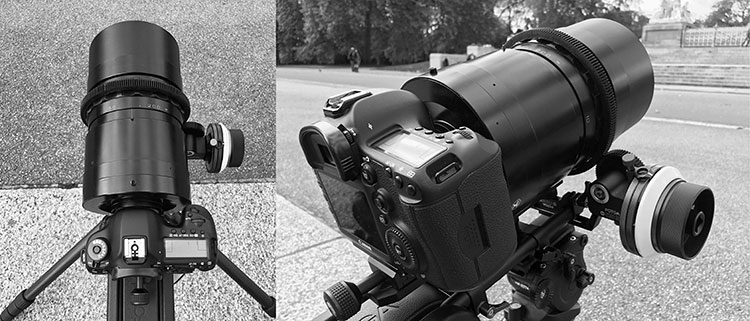
There are some steps that can be taken to help overcome its enormous size. The first thing I did was mount it to a 15mm rail system. I’ve used the Fotga follow focus rails before with the Zeiss Jena 180mm which is also a large, difficult lens to shoot with (but nothing compared to this). The MTO-1000 comes with a pair of tripod mounts built into the barrel but the flat surface area is small and doesn’t provide the sturdiest of mounts for a tripod plate. Using a rail system allows for two points of contact with the camera and lens which I found to be much more stable. Of course, once mounted to the rails, it only made sense to hook up the follow focus but I hit a snag. The adjustable Fotga lens gear only reaches about 2/3 the way around the MTO-1000. Clearly it wasn’t designed for such an enormous lens. My solution was to 3D print my own seamless lens gear.
I’ll go into some details about the custom lens gear because using a follow focus system with the MTO-1000 has made it much more manageable. You’re not going to be racking focus with it as intended due to shake but it does mean you can focus the beast with one hand while using the other to operate the camera. It’s a bit stiff but precise and much easier than trying to twist the focus ring by hand(s). Let me point out that I’m already using a larger 65T gear on the Fotga which is bigger than the one it ships with. Most vintage lenses have a greater distance of travel on the the focus ring and the MTO-1000 is no exception. I’d estimate the travel to be 350 degrees over a huge circumference so the bigger 65T gear is needed. But back to the custom 3D printed lens gear – Thingiverse has an excellent customiser created by ‘jaymis’ that enables you to build a gear right on the website. I’ve used it to generate most of my custom gears. For the MTO-1000, I used a 135mm internal hole with an approximate thickness of 1cm which I printed using a semi-flex filament.
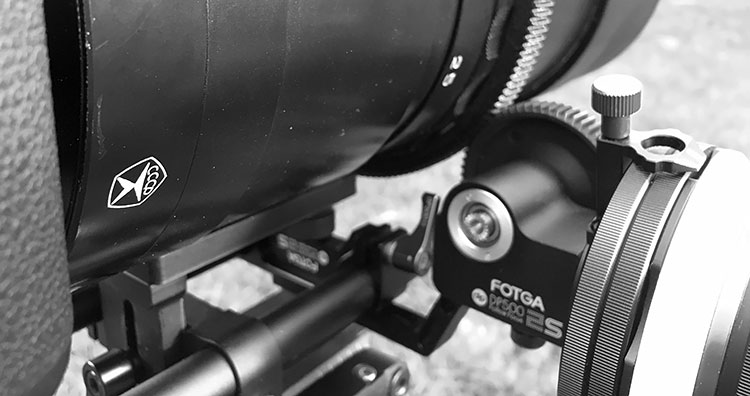
The other necessity with the MTO-1000 is a good tripod and head. What you really need is a fluid head designed for video use. I’m really happy with the Varavon 815FH and it worked great even though this setup is probably a bit heavier than the recommended limit. Using a fluid head makes it easier to acquire distant subjects and the Varavon does a great job not to shift too much when locking down. It’s a joy to use. My tripod of choice is the Benro carbon fibre C2182T which has a unique, flat pack design. A heavier tripod would provide more stability but the Benro can open very low to the ground and its light weight was the best choice for the amount of walking I did. A decent bag is also a good idea in case you need to pack the rig. The LowePro Versapack 200 lived up to its title. Removing the centre velcro section provided the perfect space for the entire rail attached lens and camera and I needed the rain cover on a couple of occasions.
Even with these extras, there are challenges shooting a lens of this range that are out of your control. Wind caused me the most trouble with video but even stills. This setup is so prone to camera shake it will effect image quality. Wind, vibrations from the ground, thermal variations in the atmosphere – all have an impact. It’s why shooting with such a long telephoto lens is so difficult. Live view helps and I used it the entire time. I’m not keen on tripods for still photography but since that’s the only option with this lens, live view is more convenient than trying to look into the viewfinder. Not only can you use magnification to insure sharp focus, having the DSLR mirror in the locked up position means less travel when taking stills. That’s right, even the mirror flipping up and down can cause enough camera shake to effect image quality – and you’ll definitely want to use a remote shutter release or a 2 sec delay to prevent your finger on the shutter button from shaking the rig.
You’ll also need to be prepared to draw attention to yourself. I’m no stranger to the odd stare when carrying around a silver, Sputnik looking lens on a 5D but there is no escaping a telescope on your camera. I threw a shoulder pad on the Fotga rails which actually provided a very comfortable rig for carrying around between shoots but I would frequently go to the effort of packing things away to avoid looks. I was stopped once by the Police who wanted to know who I was affiliated with. I told him I was the sole member of the Soviet Lens User Group (which I just realised is SLUG) to which I was told to have a nice day. I also got stopped by a really nice guy outside the Royal Albert Hall who was a musician performing there that night. He said it was his life long dream to perform there (he was opening for someone else) and was just too excited to sit still in his hotel room. Even though these experiences were positive, I never could get over the sleazy paparazzi feeling from carrying around a large conspicuous lens – but maybe that’s just me.
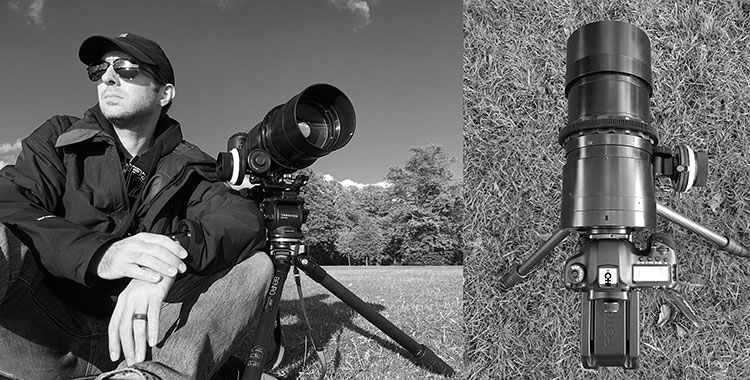
For all the hassles that comes with this lens, what do we get in return? Unprecedented range, that’s what. This is how Superman would see the world. A lens with this reach provides a spotlight of distant detail that a human eye can’t see own its own. It’s a microscope on the world. The minimum focus distance is 10 meters and you must look well beyond your typical periphery for subjects of interest. That takes some getting used to but provides unique perspectives and opportunity. Being so far away from the subject, images have an incredibly flat, compressed look. Backgrounds look huge and ominous. It’s intriguing. Wildlife behaves differently because you’re too far away to be a threat. I found myself engaged, discovering unusual bird habits I have never noticed before. Instead of walking around looking for things to film, I was often rewarded by just sitting down and studying the scene from a distance.
Everything about the MTO-1000 is extreme. From its size and reach to the impracticalities of using it. It’s not a lens you can throw in the bag with the rest of your kit. The MTO-1000 is ultimately let down by the practicalities. Perhaps that’s a befitting summary of the communist legacy. Of course the Canon 100-400 is the superior choice and gets you most of the way there for range. But when every mm counts, the MTO-1000 can deliver where the 100-400 can’t. The MTO-1000 is a specialised lens with specific applications but I think the video, if nothing else, proves it’s capable of delivering good results – if you’re prepared to overcome the challenges. From a capitalist’s perspective, let’s not forget this lens can be purchased for less than the price of a Canon branded teleconverter. That’s a lot of power for the money if you’ve got the patience to make it work. It’s a prime example (no pun intended) of why I’m drawn to DSLR cinematography – the ability to capture high end results without the high end price tag.

Industar-24M 3.5/105mm
Turist-FL Spotting Scope
You May Also Like
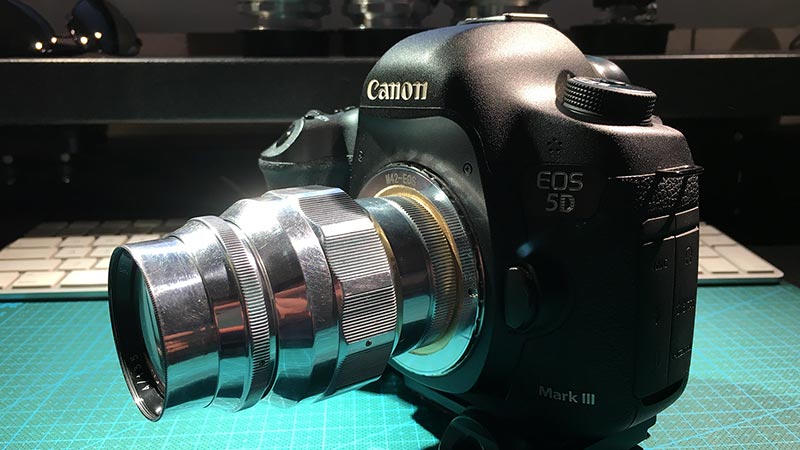
Jupiter-11 4/135mm
June 12, 2016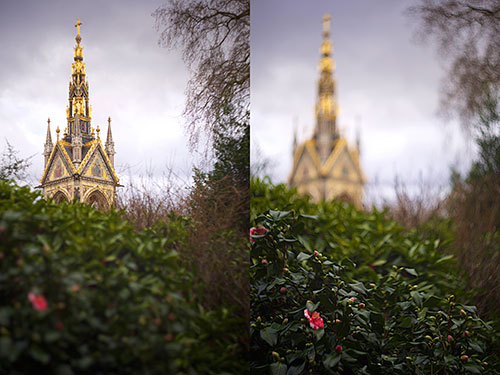
Super Precision Matte Focus Screen
January 11, 2015
